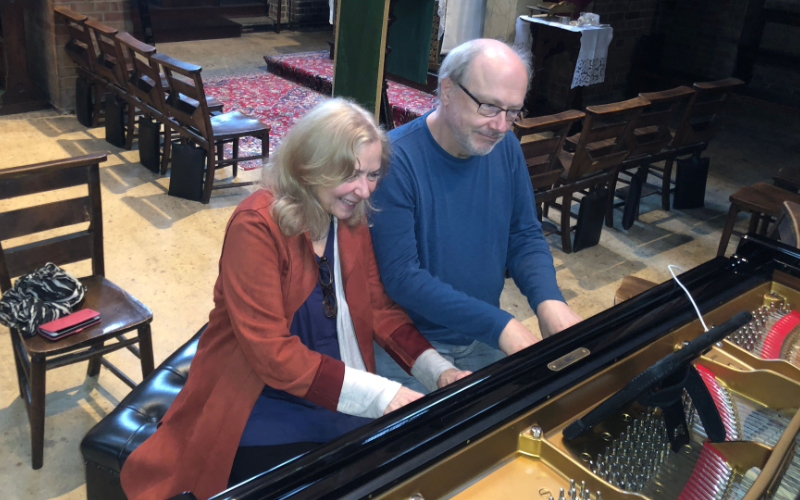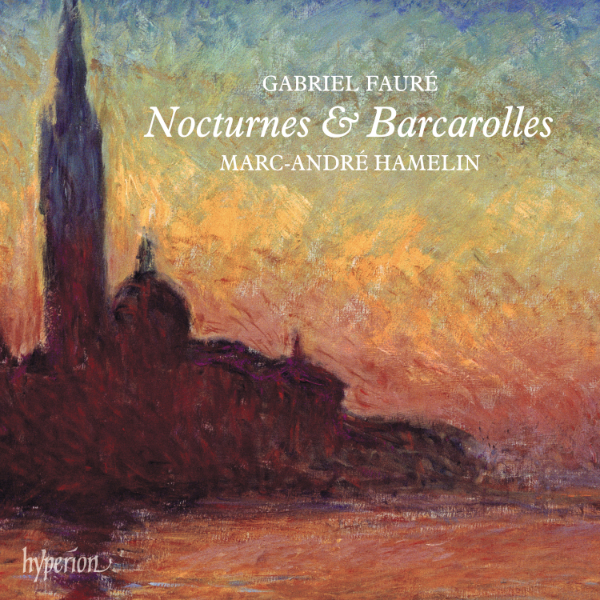Marc-André Hamelin & Cathy Fuller, piano)
Gabriel FAURÉ: Nocturnes, Nos. 1 – 13 (various opus numbers)
Gabriel FAURÉ: Barcarolles, Nos. 1 – 13 (various opus numbers)
Gabriel FAURÉ: Dolly, Op. 56
Hyperion – CDA68331/2 (2CDs)
Release Date: September 1, 2023
Format: CD & digital download
Duration: 47:36
Giorgio Koukl | 10 JUL 2023
There are not many pianists in the past and even fewer in the present time who are able to tackle all of the various periods of music, styles, and national schools.
There was a time in the 1960s when playing French music you had better be a French pianist; otherwise, the reviewers would accuse you of not being in synchrony with the national spirit or, worse, distorting the “national” idiom.
Luckily, those times are finished; today, everybody plays whatever music they like. Nevertheless, specializations emerged, and when Harnoncourt dared to conduct something absolutely out of his range of interest (this was the memorable New Year concert of the Vienna Philharmonic with the usual Strauss waltzes so dear to the Austrian public), critics cried with outrage. Too late: he clearly emerged as one of the most innovative conductors and definitely canceled this sort of subtle discrimination.
Now going to the Hyperion catalog and observing the mind-blowing choice of pianist Marc-André Hamelin is the best cure for such old-fashioned ideas. He freely switches between ragtime and Haydn, between Russian avant-gardes like Roslavets and a complete recording of some Bach.
For decades labeled as a nearly superhuman pianist, much pressure awaits any of his new releases. Usually, the public is expecting a semi-unknown composer with devilishly difficult cadenzas or at least a brilliant concerto. Not so this time.
The Canadian maestro decided to go for a difficult task re-proposing Gabriel Fauré with his 13 Nocturnes and 13 Barcaroles, gently completed with a real treat: the short four-hands suite called Dolly, played with his wife, Cathy Fuller.
Now if there is a repertoire with the most recordings ever, this is such a proposal. Looking briefly at the available recordings, we can see there are dozens and dozens of known, semi-known, or even obscure names proposing the same content, most of them French. Strangely the great names of the past are quite absent, a sign that Fauré was never mainstream. Anyway, merging to such an overflow could be dangerous.
But it is well worth the time to listen to a few bars of the first nocturne, with its simple melody, a few notes of harmonic accompaniment, nothing to show in terms of pianistic prowess, and here the magic already happens. While there are dozens of dull renderings, Hamelin creates the magic from the beginning. Minimal details are carefully weighted one against the other, the slightest tempi changes are chosen in order not to disturb any rhythmical balance, and the overall careful weighting of single voices is simply marvelous.

Cathy Fuller and Marc-André Hamelin recording Fauré’s “Dolly.” (credit: Francesco Burns)
Gabriel Fauré wrote this music not as a single cycle but gave his inspiration to music in every phase of his rather complicated life. So it is a sort of diary we are fortunate enough to follow from his beginnings as a student of Camille Saint-Säens until the extraordinary “Indian summer” of an unprecedented outburst of creativity towards the end of his life, similar only to the Leoš Janáček.
Even as many scholars tried to see some stylistic differences between the early and the late works, the profoundly lyrical, melodic, and fundamentally sad music of Fauré remains the same.
The infrequent outbursts of pianistically rewarding technical passages are integrated by Hamelin with great sensitivity, never giving the impression of being over the line.
A special mention merits the short four-hands piece called Dolly, Op. 56, in which the composer intended the dedicatee teenage pianist Regina-Helene to play the first piano part. Long time rumored to be Fauré’s daughter, she must have been quite a good pianist, as the music is not easy at all.
On this CD, Cathy Fuller joins Hamelin in the set, and, wow, she does an incredible job. The precision is breathtaking; the tiny details are all there, and it is simply one of the best renderings of this score. Needless to say, this disc deserves the highest attention of any music lover. ■
EXTERNAL LINKS:
- Marc-André Hamelin: marcandrehamelin.com

Read more by Giorgio Koukl.
RECENT POSTS
 Jan Lisiecki transforms a marathon of preludes into a compelling narrative at Spivey Hall • 26 Nov 2025
Jan Lisiecki transforms a marathon of preludes into a compelling narrative at Spivey Hall • 26 Nov 2025 Dallas Symphony’s assistant conductor rises to the challenge in a program of premieres and familiar works • 25 Nov 2025
Dallas Symphony’s assistant conductor rises to the challenge in a program of premieres and familiar works • 25 Nov 2025





.png)